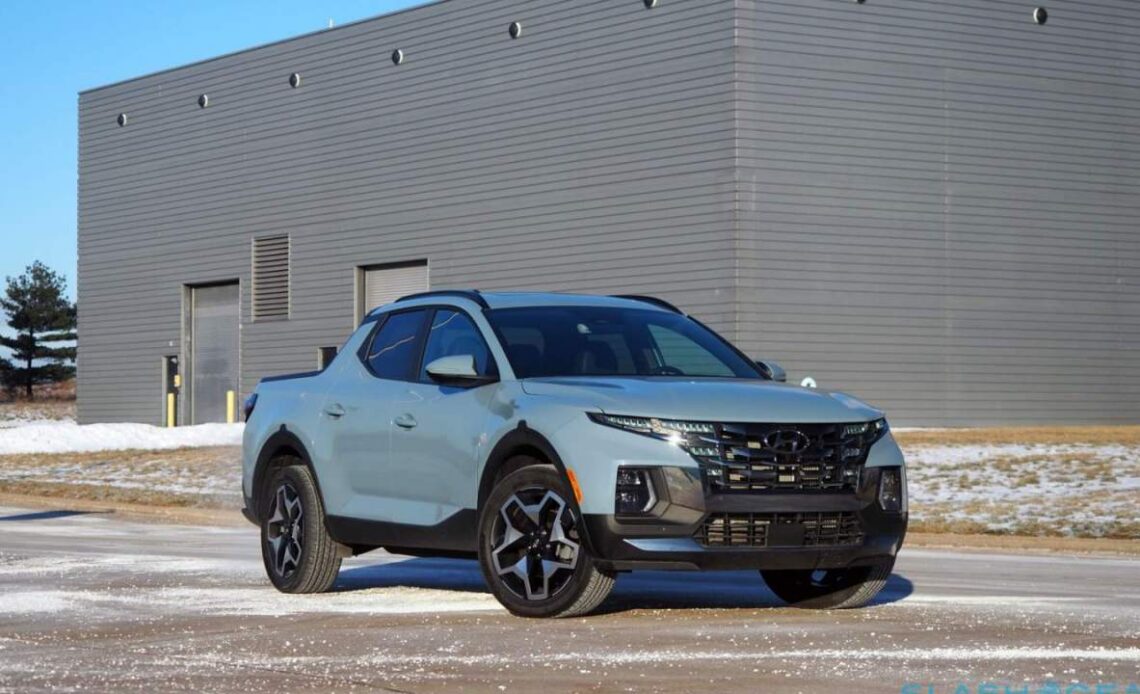
Stopped close to a F-150 or a Silverado, the 2022 Hyundai Santa Cruz completely resists the pattern in pickups throughout the most recent ten years or thereabouts. At the point when it has become progressively hard to track down a more modest truck, as they consistently fill in size just as abilities, Hyundai suggests an alternate conversation starter. Exactly how much pickup do you truly, really need?
Hyundai’s most recent plan language is associations from the terrible, forgettable models that appeared not set in stone to procure an unknown spot on an Avis yard. The grille is wide and intense, accentuated with the Santa Cruz’s headlamps and daytime running lights. From the side, the etched bumpers and voluptuous roofline and C-support point combo leave the minute pickup looking more like a moon buggy than an earthly truck.
It’s thick, and charming, and pleasingly reasonable as well. At barely short of 200 inches long and 75 inches wide, it’s with regards to a foot and a half longer than the Tucson it’s firmly connected with. Practically 4.5 foot of that length goes on the bed, which is 52.1 inches long and 53.9 inches wide. The wheel wells restricted that down to just shy of 43 inches.
In macho truck world, there’s no lack of shade tossed at the Santa Cruz. Regardless of that, it’s difficult to envision the Hyundai’s capacities holding up for by far most of pickup proprietors. In front-wheel drive structure it’ll deal with as much as 1,753 pounds of payload, motor and trim depending; all-wheel drive brings that down to 1,609 pounds. For towing, you’re checking out as much as 3,500 pounds for the FWD, or 5,000 for the AWD.
Hyundai’s bed is a reasonable one, as well. The slide-out hard tonneau cover – standard on SEL Premium and Limited trims – secures set up for security, and there’s a sizable freight box under that is likewise lockable and has waste openings for simple flushing. In any event, getting up to the bed is more clear, with formed strides in the back guard, and there are a lot of secure circles alongside the sliding rail secures.
Assuming you’ve at any point attempted to fit an off-road bicycle or armchair into the rear of a SUV, or besides endeavored to brush out the gear compartment subsequent to pulling a lot of hacked wood, the possibility of a more tough – however not larger than usual – bed most likely as of now sounds good to you. The disadvantage is that more space for freight there implies less legroom in the subsequent line, contrasted with the Tucson. Grown-ups will fit, yet it’s most certainly more cozy for their legs; the potential gain is that lifting the seat uncovers some helpful additional capacity containers.
Base models get a 2.5-liter 4-chamber gas motor, with 191 pull and 181 lb-ft of force. Front-wheel drive is standard, with a 8-speed force converter programmed; all-wheel drive is a $1,500 choice. The overhaul is a far punchier 2.5-liter super form, with 281 hp and 311 lb-ft. It has a 8-speed wet double grip with paddle-shifters, AWD, and the capacity to lock the middle diff for a 50/50 power split.
My tendency is skirt Hyundai’s sufficient however not actually energizing normally suctioned 4-pot, and go directly to the undeniably more captivating super. It has a sizable amount of ability to keep up in the fast track, and is pleasingly punchy everyday. Ride, as well, is more SUV-like than most trucks, with a lot of self-restraint even with the bed stacked up. Hyundai rates the base motor with FWD as really great for 21 mpg in the city and 26 mpg on the roadway, while the AWD Turbo ought to do 19 mpg in the city and 27 mpg on the thruway. In my own, blended driving in the last I saw barely shy of 22 mpg.
